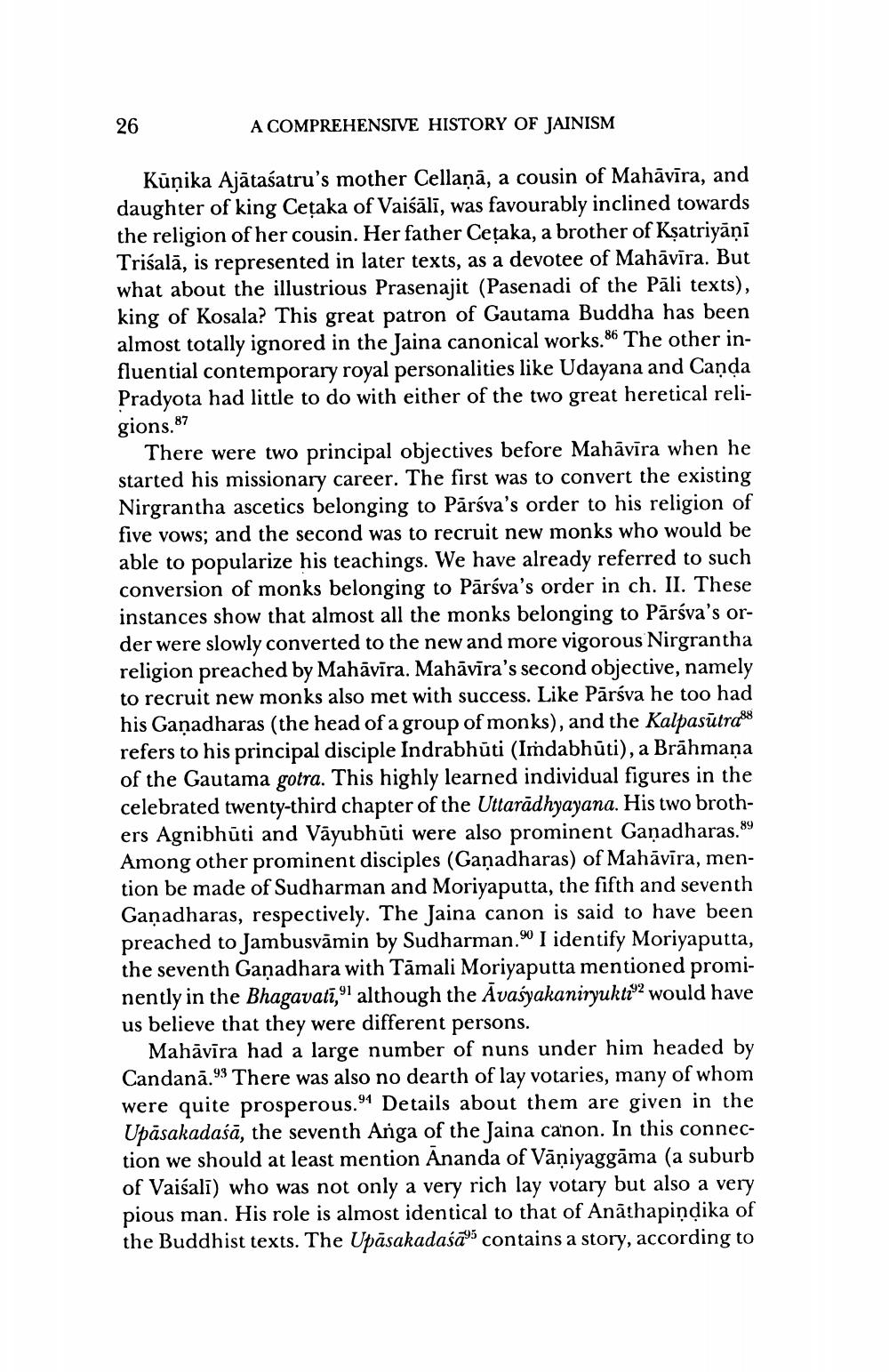________________
26
A COMPREHENSIVE HISTORY OF JAINISM
Kūņika Ajātaśatru's mother Cellaņā, a cousin of Mahāvīra, and daughter of king Cetaka of Vaiśālī, was favourably inclined towards the religion of her cousin. Her father Cetaka, a brother of Ksatriyani Trisalā, is represented in later texts, as a devotee of Mahāvīra. But what about the illustrious Prasenajit (Pasenadi of the Pāli texts), king of Kosala? This great patron of Gautama Buddha has been almost totally ignored in the Jaina canonical works. 86 The other influential contemporary royal personalities like Udayana and Caņda Pradyota had little to do with either of the two great heretical religions. 87
There were two principal objectives before Mahāvīra when he started his missionary career. The first was to convert the existing Nirgrantha ascetics belonging to Pārsva's order to his religion of five vows; and the second was to recruit new monks who would be able to popularize his teachings. We have already referred to such conversion of monks belonging to Pārsva's order in ch. II. These instances show that almost all the monks belonging to Pārsva's order were slowly converted to the new and more vigorous Nirgrantha religion preached by Mahāvīra. Mahāvīra's second objective, namely to recruit new monks also met with success. Like Pārsva he too had his Ganadharas (the head of a group of monks), and the Kalpasūtra88 refers to his principal disciple Indrabhūti (Imdabhūti), a Brāhmaṇa of the Gautama gotra. This highly learned individual figures in the celebrated twenty-third chapter of the Uttarādhyayana. His two brothers Agnibhūti and Vāyubhūti were also prominent Gañadharas. 89 Among other prominent disciples (Ganadharas) of Mahāvīra, mention be made of Sudharman and Moriyaputta, the fifth and seventh Ganadharas, respectively. The Jaina canon is said to have been preached to Jambusvāmin by Sudharman. I identify Moriyaputta, the seventh Ganadhara with Tāmali Moriyaputta mentioned prominently in the Bhagavatī,91 although the Avašyakaniryukti92 would have us believe that they were different persons.
Mahāvīra had a large number of nuns under him headed by Candanā.93 There was also no dearth of lay votaries, many of whom were quite prosperous.94 Details about them are given in the Upāsakadaśā, the seventh Anga of the Jaina canon. In this connection we should at least mention Ananda of Vāņiyaggāma (a suburb of Vaisali) who was not only a very rich lay votary but also a very pious man. His role is almost identical to that of Anāthapiņdika of the Buddhist texts. The Upāsakadasa” contains a story, according to




